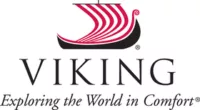
Viking Ocean Cruises
Viking began as a river cruise line and entered the ocean-cruise market with the launch of the 930-guest Viking Star.
Viking has already made an indelible mark on the sector with its fleet of stylish, near-identical, adult-only ships.
The cruise line currently has 10 ships in its fleet.
930
Passengers
465
Crew
2018
Launched
48000t
Tonnage
227m
Length
29m
Width
20kts
Speed
9
Decks
EUR
Currency
Cruise Itinerary
Days 1 - 2
Hong Kong, Hong Kong
Day 3
,
Day 4
Keelung (Chilung), Taiwan
Day 5
At Sea
Relax and make the most of the myriad of facilities available on board the ship, from fantastic entertainment to delicious and diverse dining options.
Day 6
Nagasaki, Japan
Day 7
Kagoshima, Japan
Day 8
Beppu, Kyushu Island, Oita, Japan
Days 9 - 10
Hiroshima, Japan
Day 11
Osaka, Japan
Days 12 - 13
Shimizu, Japan
Days 14 - 16
Tokyo, Japan
Day 17
,
Days 18 - 19
Sapporo, Japan
Days 20 - 26
,
Day 27
Kodiak, Alaska, Alaska
Day 28
Homer, Alaska, Alaska
Day 29
Seward, Alaska, Alaska
Day 30
Valdez, Alaska, Alaska
Day 31
,
Day 32
Icy Strait Point, United States
Day 33
Sitka, Alaska, Alaska
Day 34
Ketchikan, Alaska, Alaska
Day 35
,
Day 36
Vancouver, British Columbia, Canada

Days 1 - 2
Hong Kong, Hong Kong

Day 3
,

Day 4
Keelung (Chilung), Taiwan

Day 5
At Sea

Day 6
Nagasaki, Japan

Day 7
Kagoshima, Japan

Day 8
Beppu, Kyushu Island, Oita, Japan

Days 9 - 10
Hiroshima, Japan

Day 11
Osaka, Japan

Days 12 - 13
Shimizu, Japan

Days 14 - 16
Tokyo, Japan

Day 17
,

Days 18 - 19
Sapporo, Japan

Days 20 - 26
,

Day 27
Kodiak, Alaska, Alaska

Day 28
Homer, Alaska, Alaska

Day 29
Seward, Alaska, Alaska

Day 30
Valdez, Alaska, Alaska

Day 31
,

Day 32
Icy Strait Point, United States

Day 33
Sitka, Alaska, Alaska

Day 34
Ketchikan, Alaska, Alaska

Day 35
,

Day 36
Vancouver, British Columbia, Canada
Ship Details


Viking Ocean Cruises
Viking Orion
With their sleek, yacht-style bows and teak promenade decks, Viking’s ocean ships are a million miles from the large liners that sail the seas.
Cabins
All Prices
















